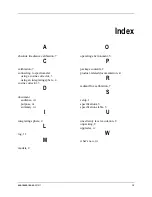
000-10000-190-02-
201511
7
Appendix A
Calibration Basics
Overview
Calibrated systems, independent of the particular calibrated unit, are always traceable to national
standards. A calibrated item is comparable to all calibrated items which are calibrated for the same
calibrated unit.
Each measurement result has an uncertainty, and the level of uncertainty is given either for one single
standard deviation (k = 1) or for two standard deviations (k = 2), which is often named as expanded
uncertainty.
A calibrated device should give trusted results; therefore, the calibration has to be done by the metrologist
following a previously defined and proven calibration procedure. Clear documentation of the calibration
setup and of the calibrated devices used is an indispensable requirement.
Calibration for Absolute Irradiance: Models HL-3
plus-CAL, HL-3 plus-CAL-EXT, HL-3-CAL and HL-
3-CAL-EXT
Absolute irradiance has the physical unit µW/nm/cm^2. The interpretation is as follows: This is the
wavelength resolved electromagnetic radiation which is emitted through an area [cm^2].
More detailed information can be found at:
http://oceanopticsfaq.com/category/calibrations/radiometric_calibrations/
Calibration for Radiant Flux
Radiant flux has the physical unit µW/nm. It reflects the total amount of emitted electromagnetic
radiation from a light source and is typically realized by placing a light source inside an integrating
sphere. The HL-3
plus
-INT models are used to calibrate the integrating sphere with an attached
spectrometer.








































